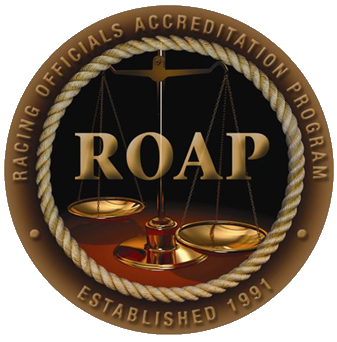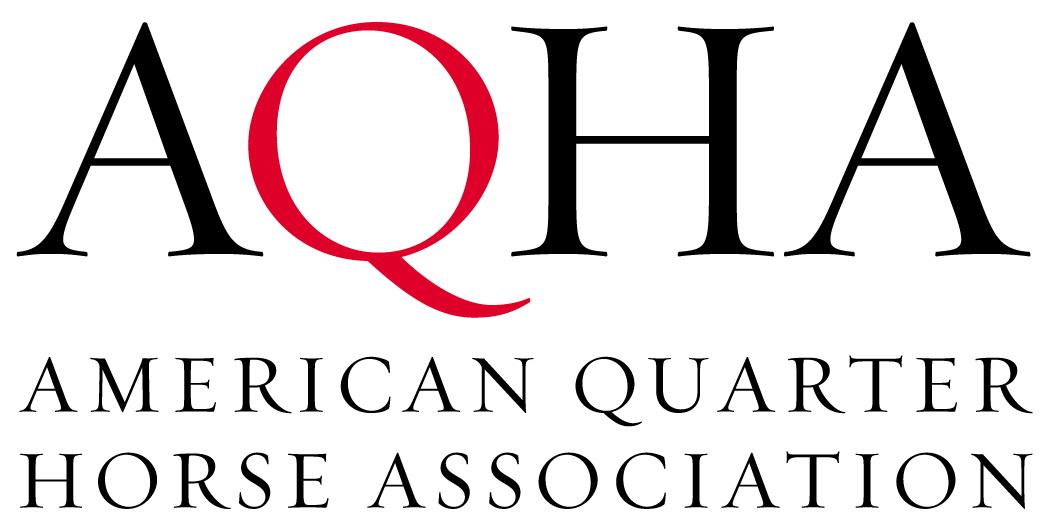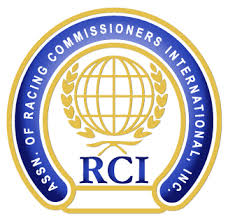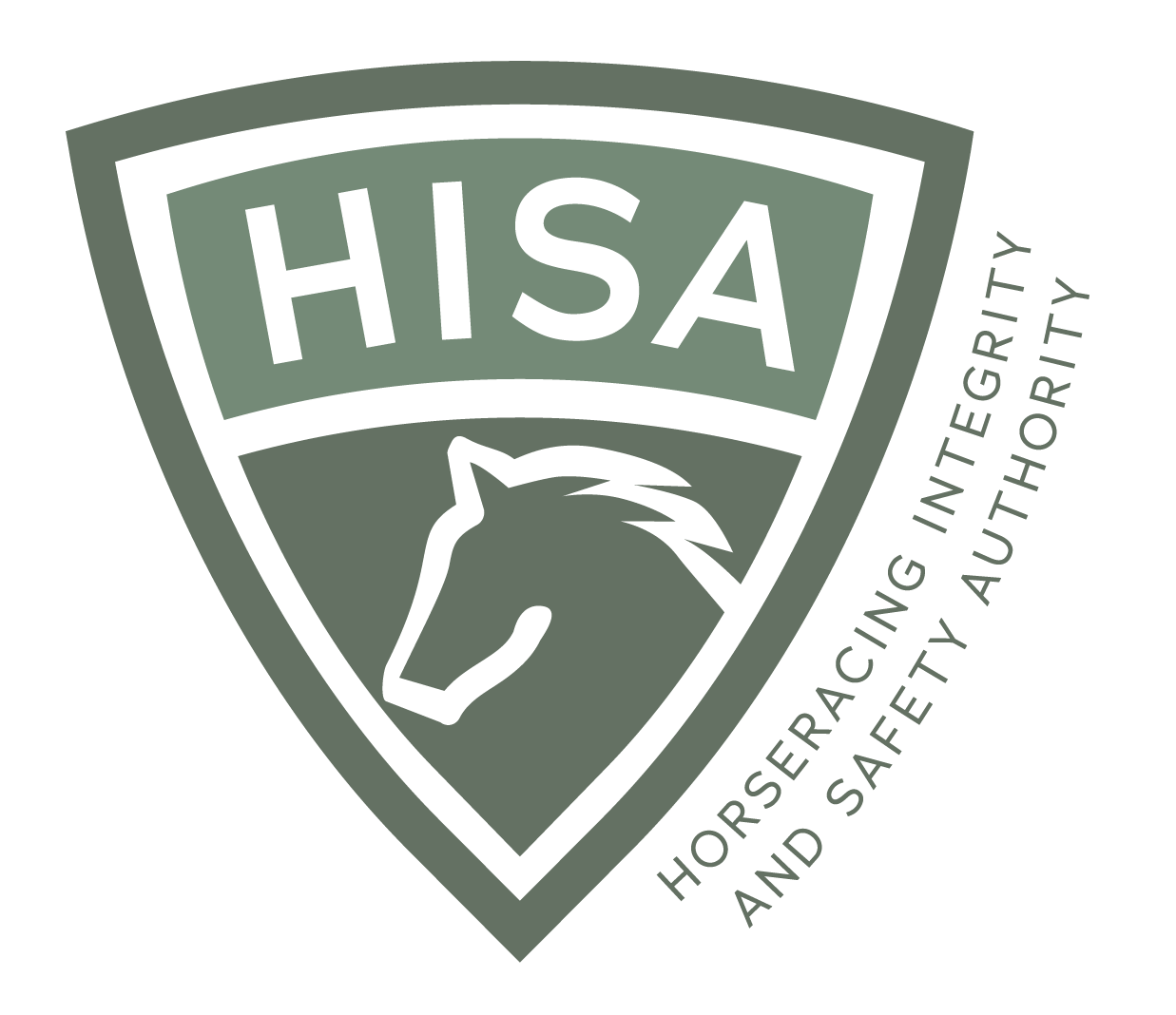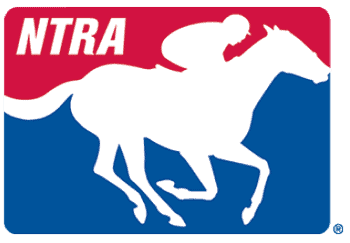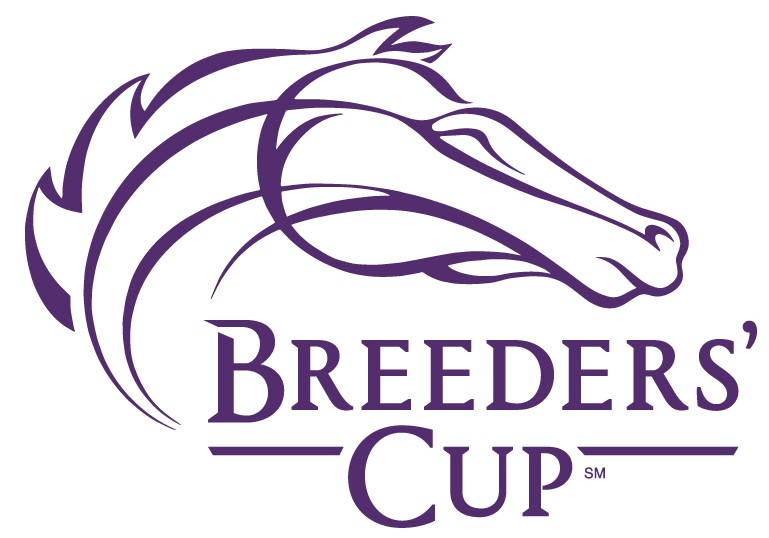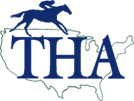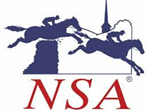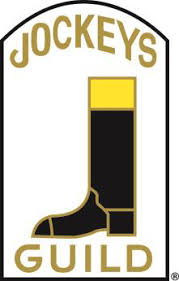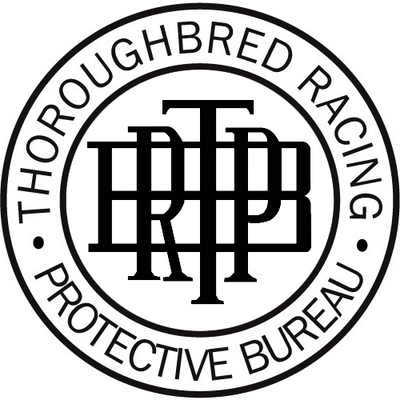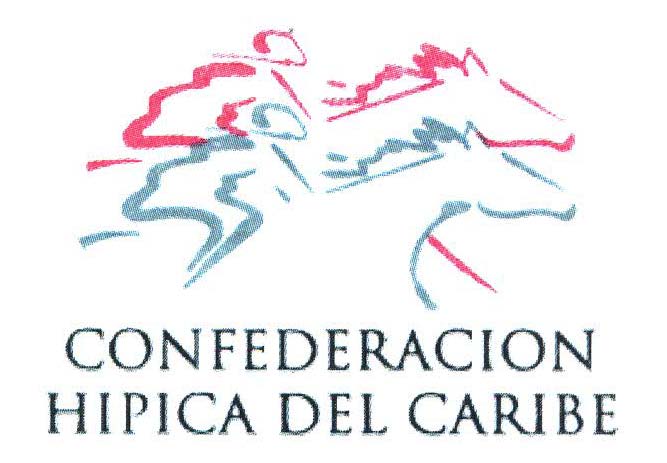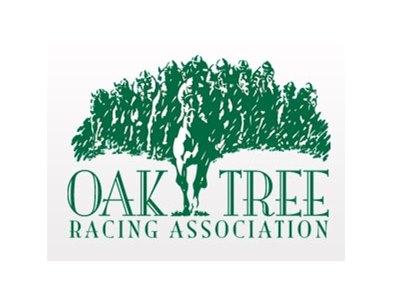These Points of Empahsis are subject to the following LEGAL PROVISIONS - Please Read Carefully
ROAP 2016 POINTS OF EMPHASIS
Reciprocity of Lists
- Almost every race office in the U.S. has access to the InCompass RTO System. The RTO contains the various lists – Stewards’, Vet’s and Starter’s – from each racetrack. All jurisdictions have agreed to share “read only” access to these lists.
- The ROAP web-site has a tutorial on how to properly utilize these lists at http://www.horseracingofficials.com/resources/Using_Lists_InCompass.pdf
- Stewards should request their racing office to notify them if any horse wanting to enter is on a list prior to entering the horse. The best way to monitor horses on lists being allowed to enter is to have your racing secretary provide one of the Stewards with an InCompass RTO password to “racing secretary ‘read only’ access” and the e-mail notification for entry “over-rides” which is when an entry clerk over-rides the pop-up that this horse is on a list and takes the entry.
- The Stewards should then determine if the horse should be allowed to enter, pending being given an off date, or if the horse should be deemed ineligible until it is has an off date on the list. Only the track that put the horse on the list can enter an off date.
- No matter which decision is reached, the trainer should be informed that his/her horse is on list and he should contact the racetrack or racing commission where the horse is on the list to determine what has to be done to have the horse removed. The Stewards and race office should provide advice, contact numbers and possibly assistance for the trainer to accomplish this objective.
- Under no circumstances should a horse be allowed to race if it is on a Stewards’, Vet’s or Starter’s list especially if the rules in your jurisdiction say that a horse on one of these lists is ineligible to enter and/or race. The possible consequences of allowing the horse to race are two-fold. If a horse on a Vet’s, Stewards’ of Starter’s list breaks down and a jockey is injured there is potential liability for everyone involved in allowing the horse to run. Or, if the horse wins, and the owner or trainer of the 2nd place horse finds out the winner was on a list at the time of the race, his has high potential of winning a protest of the winner’s eligibility.
- If your jurisdiction and/or the jurisdiction where the horse was put on the list allows a horse on a list to be entered if it will be off by race day, you may consider taking the entry, and then making every effort to assist the trainer in getting the horse through the necessary requirements to be taken off the list before the race.
- Stewards, starters, regulatory and track veterinarians, and racing offices should make every effort to take horses off lists when the requirements of coming off the lists have been met especially at the end of race meets. However, racing offices often see that a horse is on the list in one jurisdiction, but has been allowed to race in another jurisdiction or even that jurisdiction since the on-date. This is not a reason to assume the horse is okay, or should have been given an off-date. Again, contact the jurisdiction and/or racetrack where the horse is on the list and figure out if the horse can be given an off-date before the race.
- An entry of a horse on a list should never have preference over other entries when the race over-fills.
- Inter-jurisdiction protocols should be established by the ARCI/AAEP Regulatory Veterinarian Committee, ROAP Stewards’ Advisory Committee and the InCompass Racing Secretaries Committee to provide for cooperation between jurisdictions so that a horse on a list moving from one jurisdiction to another has the opportunity to become eligible to come off the list by the satisfaction the requirements imposed by the previous jurisdiction, in the current jurisdiction.
- These lists should not be used to keep vet’s, starter’s, Stewards’ or race office notes on a horse or licensee. The RTO System has applications to allow notes to be kept for use at that track only, or to be shared with other regulatory vets, starters or Stewards. Individual licensees can be placed on horsemen’s lists by the track.
Stewards/Judges Code of Conduct
The following list of the character and conduct a Steward or judge should strive to maintain is provided as a proactive method to help ensure the integrity of the Board of Stewards or Judges, avoid potential conflicts of interests, and aid Stewards and Judges in maintaining the respect of the horsemen, track management, racing fans and handicappers. This code will provide Stewards and Judges with the guidelines to earn respect for their impartiality, consistency and equitable treatment of all licensees. Stewards should also be evaluated at the end of a race meeting by the racing commission with input from horsemen, track management and jockeys.
- Stewards/Judges should uphold the integrity and independence of their office at all times, because an independent and uncompromised office is necessary for the effective execution of official duties.
- Stewards/Judges shall avoid the appearance of any impropriety in their activities in order to maintain the highest standards of conduct so that their office shall not be compromised nor their integrity called into question.
- Stewards/Judges shall not allow their office to be used to advance their private interests, the interests of others, or to convey the impression that they are able to be influenced or compromised.
- Stewards/Judges shall attend to all business pending before their office in a prompt, impartial and courteous manner.
- Stewards/Judges shall be respectful and courteous to all persons who have business before their office.
- Stewards/Judges shall disqualify themselves from any business that comes before them where their integrity and fairness may be compromised due to a personal bias or prejudice.
- All Stewards/Judges shall engage in activities that improve and promote the public confidence and the integrity of racing, to include interaction with other racing officials and racing organizations in the common goal of improving the horse racing industry.
- Stewards/Judges shall regulate their activities to minimize the risk of a conflict of interest with their office.
- Stewards/Judges shall not accept a gift or favor from anyone whose interests are likely to come before their office.
- Stewards/Judges shall at all times maintain a level of professionalism and competence that is acceptable to their peers.
- Stewards/Judges shall not willfully obstruct or stall any business before their office.
- Stewards/Judges shall not make any wager or allow any wager to be made on their behalf on any horse race during their appointment to office.
- Stewards/Judges shall not participate in the sale, purchase or ownership of a racehorse at the meeting during their appointment to office.
- Stewards/Judges shall not sell or solicit horse insurance during their appointment to office.
- Stewards/Judges shall not be licensed in any other capacity without permission of the commission during their appointment to office.
- Stewards/Judges shall not consume or be under the influence of alcohol while performing official duties.
- While Stewards/Judges may attend a track or horsemen’s social event, fund-raiser, group activity or awards ceremony, they should not socialize with individual horsemen.
Encourage Consistency and Uniform in Enforcement of Interference Rules.
Most jurisdictions have adopted:
ARCI Model Rule 010-035 Running of the Race
E. Post to Finish
(2) Interference, Jostling or Striking
(a) A jockey shall not ride carelessly or willfully so as to permit his/her mount to interfere with, impede or intimidate any other horse in the race.
(b) No jockey shall carelessly or willfully jostle, strike or touch another jockey or another jockey's horse or equipment.
(c) No jockey shall unnecessarily cause his/her horse to shorten its stride so as to give the
appearance of having suffered a foul.
(3) Maintaining a Straight Course
(a) When the way is clear in a race, a horse may be ridden to any part of the course, but if any horse swerves, or is ridden to either side, so as to interfere with, impede or intimidate any other horse, it is a foul.
(b) The offending horse may be disqualified, if in the opinion of the Stewards, the foul altered the finish of the race, regardless of whether the foul was accidental, willful or the result of careless riding.
(c) If the Stewards determine the foul was intentional, or due to careless riding, the jockey may be held responsible.
(d) In a straightaway race, every horse must maintain position as nearly as possible in the lane in which it starts. If a horse is ridden, drifts or swerves out of its lane in such a manner that it interferes with, impedes or intimidates another horse, it is a foul and may result in the disqualification of the offending horse.
(4) Disqualification
(a) When the Stewards determine that a horse shall be disqualified for interference, they may place the offending horse behind such horses as in their judgment it interfered with, or they may place it last.
(b) If a horse is disqualified for a foul, any horse or horses in the same race owned or trained by the same interests, whether coupled or uncoupled may also be disqualified.
The key is determining if, as highlighted in (3)(b) above, the foul altered the finish or outcome of the race. As experienced Stewards know, this can be a difficult decision to make, as each incident may have variable factors to consider. These factors include contact, intimidation, altered course, checked, pulled up, clipped heels, no room, no opening, blocked, herded, forced wide, in tight, accelerating, decelerating, continued to ride, race riding and other terms commonly used by Stewards to explain their decision making process. Being consistent can be difficult as the factors involved in making the decision to disqualify or not are rarely the same.
Stewards, however, must try to be as consistent as possible. Being uniform in how they go about making their decisions will improve consistency. Hanging the inquiry sign, as soon as the Stewards know they have an incident that requires review and potentially a decision is the first-step. The jockeys, horsemen and fans want to know that you are looking even if a disqualification is probably not warranted. Race replay videos should be reviewed from all possible angles. Jockeys, patrol judges, starter, outriders should be talked to whenever pertinent. Claims of foul by jockeys and trainers obviously require the same scrutiny.
A written record in a journal or data file on-line of the Stewards’ decisions on all inquiries and objections, whether or not there was a disqualification, will certainly help with consistency. The transparency of producing and posting a written description of the incident and explanation of why the Stewards made their decision including referencing the applicable rule on the Internet and in the racing office and jockey room will help jockeys, horsemen and fans better understand the decision making process.
Reviewing the race replay video with the jockeys prior to the next race day helps the jockeys recognize all of the factors involved in the process. This also gives the jockeys the opportunity to disagree and often offer constructive comments. Giving trainers and owners the same opportunity to review the race replay videos with the Stewards the next day will certainly help with transparency. The horsemen will begin to appreciate all the factors involved in making these difficult decisions. In addition, Stewards may not always correct, and routine race replay review will help them be more effective and consistent.
Simulcasting, whereby, a racing fan may see decisions on interference made by Stewards at 5 or more tracks in a given day will show the inconsistency between Boards of Stewards across jurisdictions. In order to try to be more consistent across the country, Stewards should avail themselves of the opportunity to watch races and race replays from other tracks, especially incidents of interference and disqualifications. In addition, all Stewards should take the annual ROAP Video Survey of racing incidents, whereby the viewer is asked to make the call on a disqualification for interference. The review of the results of the survey can be educational for Stewards, horsemen and fans. Race replay review at Stewards’ Continuing Education Seminars is an excellent way to review, discuss and hopefully, improve consistency among the tracks in that region and nationally.
Enforcement of the Use of the Whip or Racing Crop Rules and Regulations
Every jurisdiction should seriously consider adopting the racing crop ARCI Model Rules:
ARCI-010-035 Running of the Race
A. Equipment
(1) All riding crops are subject to inspection and approval by the Stewards and the clerk of scales.
(a) Riding crops shall have a shaft and a flap and will be allowed in flat racing including training, only as follows.
(A) Maximum weight of eight ounces;
(B) Maximum length, including flap of 30 inches
(C) Minimum diameter of the shaft of three-eighths inch; and
(D) Shaft contact area must be smooth, with no protrusions or raised surface, and covered by shock absorbing material that gives a compression factor of at least one-millimeter throughout its circumference.
(b) The flap is the only allowable attachment to the shaft and must meet these specifications:
(A) Length beyond the end of the shaft a maximum of one inch;
(B) Width a minimum of 0.8 inch and a maximum of 1.6 inches;
(C) No reinforcements or additions beyond the end of the shaft;
(D) No binding within seven inches of the end of the shaft; and
(E) Shock absorbing characteristics similar to those the contact area of the shaft.
The adoption and enforcement of these ARCI Model Rules on a national basis by racing commissions should be a safety and integrity priority in every jurisdiction. When jockeys are allowed to use whips or riding crops that have varying degrees of force at impact, an unfair advantage is achieved. Stewards and racing officials in the Jockeys’ Room should be inspecting the whips and riding crops on a daily basis no matter what rule is in effect in your jurisdiction.
The current ARCI Model Rule is very specific on the specifications of the riding crop, but a number of whip makers have been modifying whips and making riding crops that do not adequately meet these specifications. With a tape measure, postage or cooking scale and a trained eye, Stewards and racing officials can tell the difference between riding crops that meet, or do not meet the Model Rule specifications. In addition, whips or riding crops that are frayed, or the shaft is broken inside the flapper, or otherwise damaged should not be allowed. It is recommended that racetracks keep a number of approved riding crops for use by and for sale to jockeys whose whips or riding crops are not acceptable.
One source for approved riding crops that is recognized by The Jockey Club, National Steeplechase Association, British Horse Racing Authority and the Jockeys’ Guild is Old Mill Saddlery at http://www.saddlery.biz/horse-riding-wear/riding-whips/racing-whips/procush-flat-race-whip.html. The Jockey Club Safety Committee in cooperation with Dr. Mick Petersen’s Racing Surfaces Laboratory at the University of Maine has developed equipment that is able to test the impact of whips and riding crops to help further establish specifications and certification of manufacturers. Dr. Petersen’s encourages racetracks and racing commissions to send him whips for testing.
Of even more importance than adopting the specification for the Riding Crop, is adoption of the following ARCI Model Rule on the use of the riding crop.
ARCI-010-035 Running of the Race
E. Post to Finish
(7) Use of Riding Crop
(a) Although the use of a riding crop is not required, any jockey who uses a riding crop during a race shall do so only in a manner consistent with exerting his/her best efforts to win.
(b) In all races where a jockey will ride without a riding crop, an announcement of such fact shall be made over the public address system.
(c) No electrical or mechanical device or other expedient designed to increase or retard the speed of a horse, other than the riding crop approved by the Stewards, shall be possessed by anyone, or applied by anyone to the horse at any time on the grounds of the association during the meeting, whether in a race or otherwise.
(d) Riding crops shall not be used on two-year-old horses before April 1 of each year.
(e) The riding crop shall only be used for safety, correction and encouragement.
(f) All riders should comply with the following when using a riding crop:
(A) Showing the horse the riding crop and giving it time to respond before hitting it:
(B) Having used the riding crop, giving the horse a chance to respond before using it again;
(C) Using the riding crop in rhythm with the horse’s stride.
(g) Prohibited uses of the riding crop includes but are not limited to striking a horse:
(A) on the head, flanks or on any other part of its body other than the shoulders or hind quarters except when necessary to control a horse;
(B) during the post parade or after the finish of the race except when necessary to control the horse;
(C) excessively or brutally causing welts or breaks in the skin;
(D) when the horse is clearly out of the race or has obtained its maximum placing;
(E) persistently even though the horse is showing no response under the riding crop; or
(F) striking another rider or horse.
(h) After the race, horses will be subject to inspection by a racing or official veterinarian looking for cuts, welts or bruises in the skin. Any adverse findings shall be reported to the Stewards.
(i) The giving of instructions by any licensee that if obeyed would lead to a violation of this rule may result in disciplinary action also being taken against the licensee who gave such instructions.
These rules were adopted after extensive consultation with the Jockeys’ Guild management and meetings with jockey colonies from New York to California. The rules are very much self-explanatory, but consistent enforcement is more difficult. First and foremost, the Stewards must give the jockeys a clear and concise explanation of what is expected in the use of the riding crop. Second, race videos of do’s and don’ts should be reviewed with the jockeys. A penalty structure should be developed for first and multiple offences (see Ontario example). Finally, the Stewards must be diligent in the live watching of each race and then reviewing the races immediately after declaring the race official and the next day. Then, if the Stewards see potential infractions of these rules either live or thereafter, the offending jockeys should be immediately notified and if deemed necessary called to a hearing with the Stewards. Again, keeping a log of the use of whip infractions by jockey and previously recommended for riding infractions will help the Steward to achieve consistency in their level of fines and suspensions.
Another related race riding rule is:
ARCI-010-035 Running of the Race
E. Post to Finish
(1)Horses Shall be Ridden Out. All horses shall be ridden out in every race. A jockey shall not ease up or coast to the finish, without reasonable cause, even if the horse has no apparent chance to win prize money. A jockey shall give a best effort during a race, and each horse shall be ridden to win.
All Stewards owe a responsibility to the wagering public and horsemen to ensure that jockeys give their best effort in race riding in order to achieve the maximum placing of the mount. This does not mean abusing the horse with the riding crop, but it does mean staying down on the horse continuing to urge the horse to the best possible placing. Standing up before the finish-line should never be tolerated unless the jockey is attempting to pull-up a horse that has a problem – injury, severe fatigue, EIPH, stumbling, etc. Failure to persevere to the wire in order to finish in the top 4 for the betting public or in the top 5 for purse money, should be a fine even for a first offence in order to be a deterrent, send a message to the jockeys and assure the horsemen and public that the Stewards are safeguarding their protecting their investments.
The Ontario Racing Commission passed crop regulations in 2009. There was much debate at that time, but now there is little to no discussion concerning their crop rules. Not only did they implement a usage regulation but also a penalty guideline as well. The jockeys have adapted to the rules and respect them with little violations. Click here to review the Ontario rule and penalty directive from 2009.
